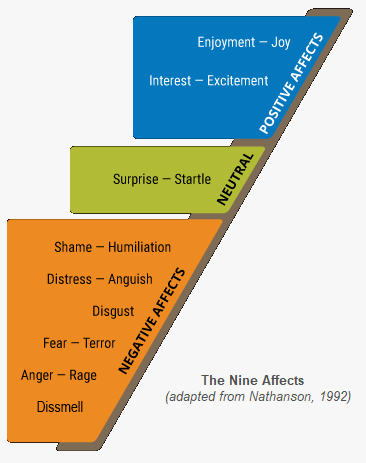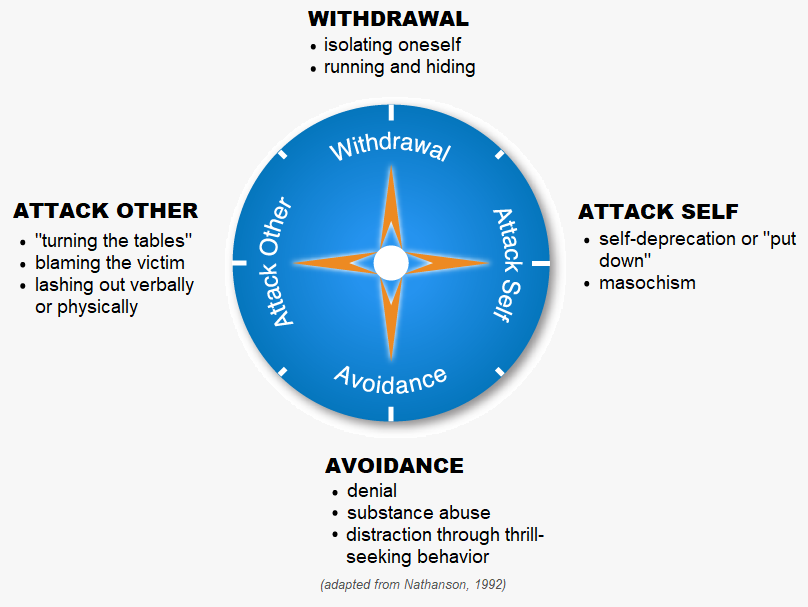2.4 The Nine Affects
Informal and formal restorative processes foster the expression of affect or emotion. In doing so they help to foster emotional bonds. It is through the mutual exchange of expressed affect (via emotion) that educators and students build community, creating the emotional bonds that tie them together. Restorative practices such as conferences and circles provide the safe environment for individuals to express and exchange emotion (Nathanson, 1992).

There are nine distinct affects to explain the expression of emotion. Most of the affects are defined by pairs of words that represent the least and the most intense expression of a particular affect. The six negative affects include shame-humiliation, distress-anguish, disgust, fear-terror, anger-rage, and dissmell, a word coined to describe “turning up one’s nose” in a rejecting way (Tomkins, 1963). An individual does not have to do something wrong to feel shame. The individual just has to experience something that interrupts interest-excitement or enjoyment-joy. This understanding of shame provides a critical explanation for why victims of crime often feel a strong sense of shame, even though it was the offender who committed the “shameful” act (Angel, 2005).
According to Tomkins, because we have evolved with an affect system with some affects that feel good and some that feel bad, each human is motivated to:
- Maximize positive affect
- Minimize (reduce) negative affect
- Both of these actions work best when all affect is expressed
According to the “Tomkins blueprint”, anything that helps the performance of these three rules is good for human life. Anything that interferes with them is bad for us.
How could this information be beneficial to your students? Try to think of one or two ways you could use this information in communicating and interacting with students on a regular basis.
Nathanson observed and discussed four ways that human beings react to shame. He found that when the shame response is triggered, people respond with one of the following:
- withdrawal – pulling away
- avoidance – denial
- attacking self – the individual puts himself or herself down, or harms themself
- attacking others – blaming others for what they’ve done
This led to the depiction of shame response through a four-point compass:

Almost everyone feels or exhibits one or more of these responses every time a positive affect/emotion is interrupted. Fortunately for most of us, our shame response is mild or short lived.
Assignment:
